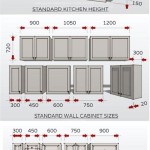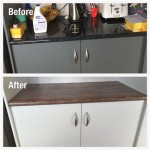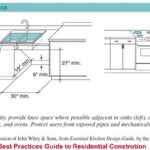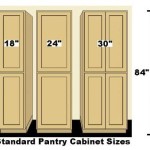Measurements For Kitchen Cabinet Handles: A Guide To Achieving Perfect Harmony
Choosing the right kitchen cabinet handles can make a significant difference in the overall aesthetic and functionality of your kitchen. From sleek modern designs to traditional styles, the options are endless. However, selecting the ideal cabinet handles involves more than just aesthetics. Precise measurements are crucial to ensuring a seamless installation and a harmonious look. This article will guide you through the essential measurements to consider when choosing and installing your kitchen cabinet handles.
1. Determining Handle Length
The length of the cabinet handle is arguably the most critical measurement to get right. An appropriate handle length should be both visually pleasing and ergonomically functional. Here's how to determine the right size:
- Consider the size of your cabinetry: Larger cabinets with wider doors generally require longer handles to provide an easy grip. Conversely, smaller cabinets or drawers might be better suited to shorter handles.
- Think about your personal preferences: Do you prefer a more substantial handle or a delicate, minimalist option? Longer handles often create a more prominent design statement while shorter handles can offer a subtle and clean aesthetic.
- Test the handle in person: If possible, test the handle in a showroom or on a sample door to ensure it feels comfortable in your hand and fits your grip style.
It is also helpful to consider the placement of the handle on the cabinet door. For example, a handle placed towards the bottom of the door might require a slightly longer length to provide a comfortable grip. Alternatively, a handle placed centrally on the door might be more suitable for a shorter option.
2. Understanding Center-to-Center Distance
The center-to-center (CTC) distance refers to the measurement between the centers of the holes on the cabinet handle. This measurement is crucial as it dictates the precise positioning of the handle on the cabinet door. Here's how to determine the correct CTC distance:
- Consider the current hardware: If you are replacing existing handles, carefully measure the CTC distance of the old handles. This will ensure that the new handles fit seamlessly into the existing holes.
- Check manufacturer guidelines: Most handle manufacturers specify the CTC distance on their product descriptions. Refer to these guidelines to ensure compatibility with your chosen handle.
- Take into account the cabinet door width: The CTC distance is typically calculated based on the width of the cabinet door. Aim for a CTC measurement that allows for a comfortable distance between the handle and the edge of the door.
If the CTC distance is not provided by the manufacturer, you can measure it directly on the handle itself. Simply use a ruler or tape measure to determine the distance between the centers of the two holes. It's always best to double-check this measurement to avoid any installation errors.
3. Measuring for Knobs
While handles are commonly used on kitchen cabinetry, knobs are also a popular choice. While the concept of measuring for knobs is similar to handles, there are some key differences. Instead of measuring center-to-center distance, you focus on the overall diameter of the knob and how it sits in relation to the cabinet door.
- Consider the overall diameter: The knob's diameter should be proportionate to the size of the cabinet door. A larger knob might feel awkward on a small cabinet door, while a smaller knob might be difficult to grip on a wide door.
- Check the projection: The projection refers to the distance the knob extends out from the cabinet door. A larger projection can make it easier to grasp, but a smaller projection can offer a more streamlined aesthetic.
- Think about the style: Knobs come in various shapes and styles, from simple round knobs to more intricate designs. The chosen knob should complement the overall style of your kitchen cabinetry.
Similar to handles, it's essential to measure the existing holes on the cabinet doors if you are replacing existing knobs. This will ensure that the new knobs fit seamlessly and do not require additional drilling. Remember to always measure twice and drill once to avoid any installation mistakes.

The Right Length Cabinet Pulls For Doors And Drawers Kitchen Hardware Drawer

How To Choose Hardware Pull Size For Your Cabinets

The Right Length Cabinet Pulls For Doors And Drawers Kitchen Hardware

The Right Length Cabinet Pulls For Doors And Drawers Porch Daydreamer

How To Measure Kitchen Cabinet Handles The Handmade Handle Company

The Right Length Cabinet Pulls For Doors And Drawers Porch Daydreamer

A Simplified Guide To Understanding Standard Handle Sizes House

250 Best Kitchen Cabinet Hardware Ideas

A Simplified Guide To Understanding Standard Handle Sizes House

Comprehensive Guide To Cabinet Hardware Size Placement Handles More
Related Posts








